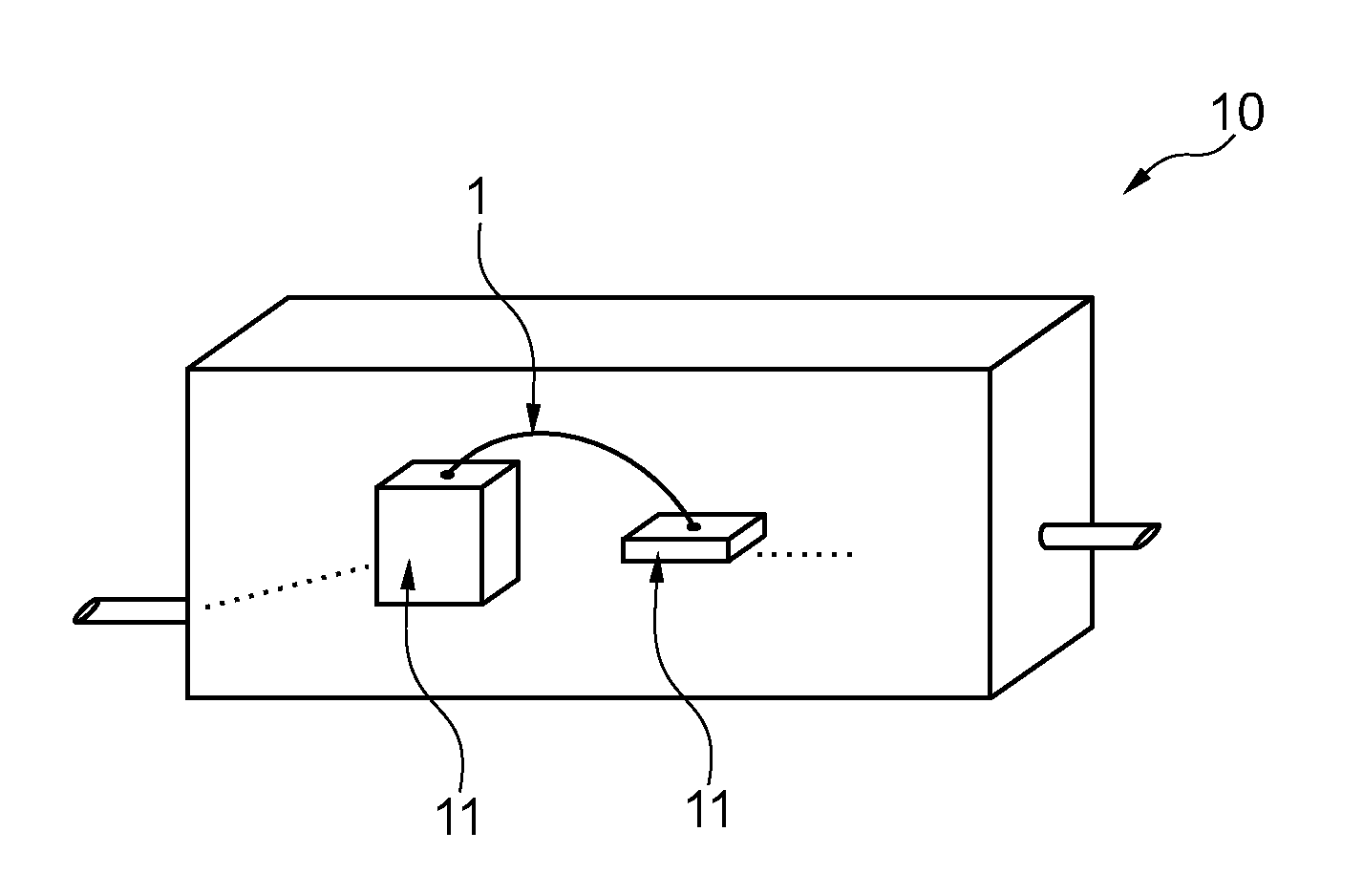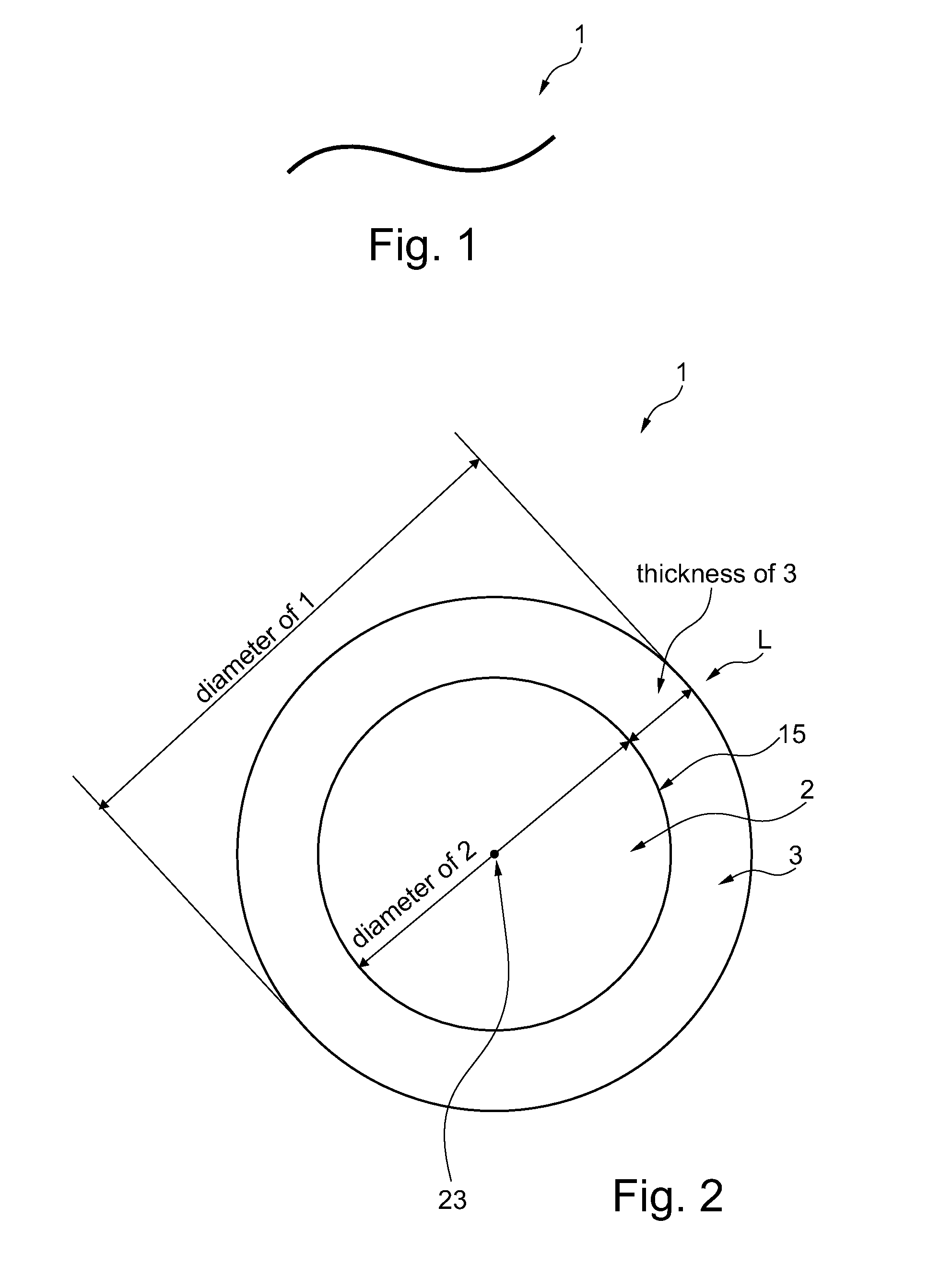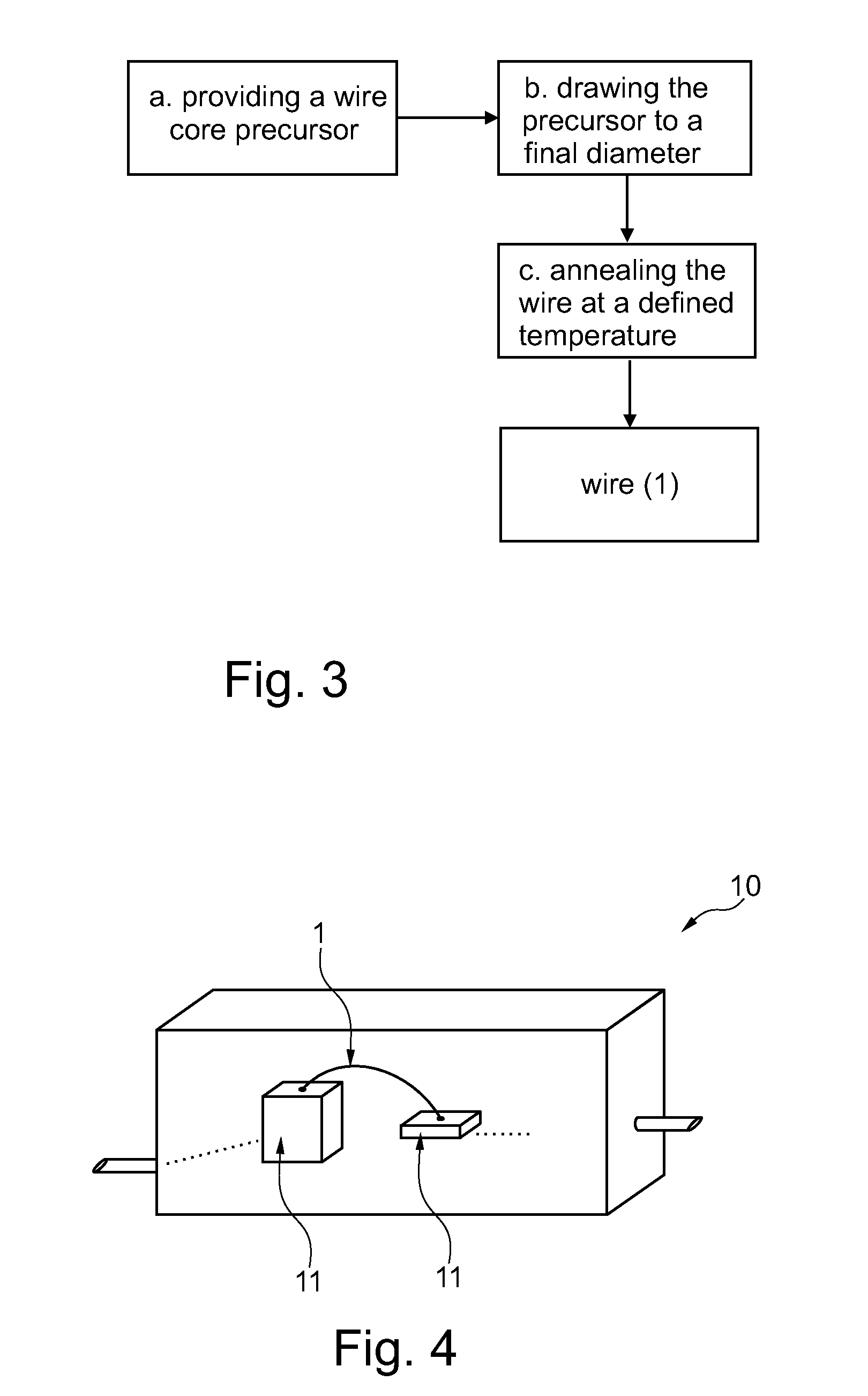Copper bond wire and method of making the same
- Summary
- Abstract
- Description
- Claims
- Application Information
AI Technical Summary
Benefits of technology
Problems solved by technology
Method used
Image
Examples
example 1
[0113]A quantity of copper material of at least 99.99% purity (“4N-copper”) was molten in a crucible. No further substances were added to the melt. Then a wire core precursor was cast from the melt.
[0114]The chemical composition of the Cu wire was controlled using an Inductively Coupled Plasma (ICP) instrument (Perkin Elmer ICP-OES 7100DV). The Cu wires were dissolved in concentrated nitric acid and the solution was used for ICP analysis. The methodology to test highly pure Cu wire was established with the equipment manufacturer as per the well-known technique adopted for bulk Cu.
[0115]The wire core precursor was then drawn in several drawing steps to form the wire core 2 with a specified diameter. In order to confirm the beneficial effects of the invention for different diameters, a selection of wires with different diameters have been manufactured. Table 1 below shows a list of the different wire diameters:
TABLE 1Ranges of elongation and average grain sizes for different wire diam...
example 2
[0143]A quantity of copper material of at least 99.99% purity (“4N-copper”) is molten in a crucible. Small amounts of silver (Ag) are added to the melt and an even distribution of the added components in the copper melt is provided. Then a wire core precursor is cast from the melt.
[0144]The wire core precursor is then drawn in several drawing steps to form the wire core 2 with a specified diameter of presently 20 μm. The cross section of the wire core 2 is of essentially circular shape. It is to be understood that the wire diameter is not considered a highly exact value due to fluctuations in the shape of the cross section or the like. In the present sense, if a wire is defined to have a diameter of e.g. 20 μm, the diameter is understood to be in the range of 19.5 to 20.5 μm.
[0145]By this procedure, several different samples of an inventive wire and a comparative wire have been manufactured.
TABLE 7Wire diameter 20 μm, values in ppmPd,Au, Pt,Cr, Al,Sam-B, Zr,Mg,pleAgNiTiCa, CeLaPSFeM...
example 3
[0170]A quantity of copper material of at least 99.99% purity (“4N-copper”) is melted in a crucible. Small amounts of palladium (Pd) are added to the melt and an even distribution of the added component in the copper melt is provided. Then a wire core precursor is produced by continuously and slowly casting the melt into rods of between 2 mm and 25 mm diameter.
[0171]The wire core precursor is then drawn in several drawing steps to form the wire core 2 with a specified diameter of presently 20 μm. The drawing is conducted as cold drawing at room temperature.
[0172]Concerning the cross section shape of the wire core 2, reference is made to the remarks for the above examples.
[0173]By this procedure, several different samples of an inventive wire have been manufactured. In a first variant, the amount of palladium in the copper has been adjusted to 0.89%. In a second, most preferred variant, the amount of palladium has been adjusted to 1.25%.
[0174]Concerning thresholds of impurities of fu...
PUM
| Property | Measurement | Unit |
|---|---|---|
| Temperature | aaaaa | aaaaa |
| Temperature | aaaaa | aaaaa |
| Momentum | aaaaa | aaaaa |
Abstract
Description
Claims
Application Information
 Login to View More
Login to View More - R&D
- Intellectual Property
- Life Sciences
- Materials
- Tech Scout
- Unparalleled Data Quality
- Higher Quality Content
- 60% Fewer Hallucinations
Browse by: Latest US Patents, China's latest patents, Technical Efficacy Thesaurus, Application Domain, Technology Topic, Popular Technical Reports.
© 2025 PatSnap. All rights reserved.Legal|Privacy policy|Modern Slavery Act Transparency Statement|Sitemap|About US| Contact US: help@patsnap.com



